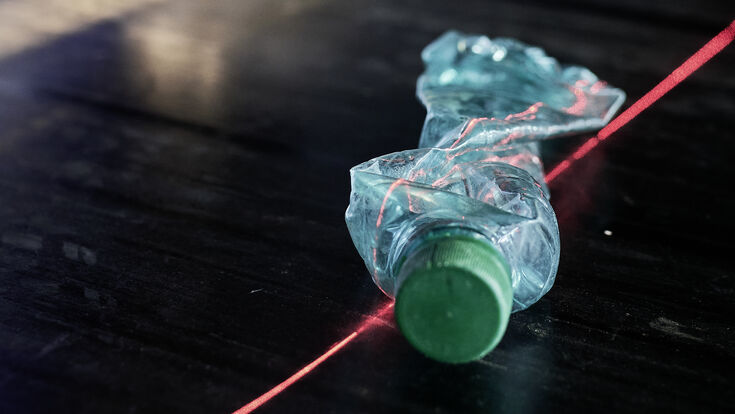Plastic Recycling : Can advanced sorting contribute to plastic circularity in Europe?

The report, Advanced Sorting for Circularity, concludes that for many plastic packaging formats, further optimisation of existing sorting technologies is likely to be sufficient to improve circularity. For the remaining sorting challenges, object recognition could be the most cost-effective advanced sorting technology to enable increased circularity, including when compared to marker technology.
The report, commissioned by Amcor, TOMRA and other leading industry players, is published on the Eunomia website and is now available for free download.
Demand for greater Sustainability
The plastic packaging industry is currently facing a growing demand for greater sustainability, particularly in terms of increasing recycled content and promoting a circular economy. This pressure varies across Europe but is mainly driven by public and governmental demands, resulting in brand owners adopting more sustainable practices. EU legislation is also imposing requirements on packaging, in particular the anticipated Packaging and Packaging Waste Regulation (PPWR), which is expected to come into force later in 2024.
This new report examines how marker and object recognition sorting technologies can contribute to circularity and traceability in plastic packaging recycling, specifically in the EU, Norway, Switzerland and the UK.
The report's methodology involves identifying polymers and packaging material formats that are not adequately sorted by existing technologies to achieve circularity. It then evaluates new technologies (i.e. advanced sorting technologies) that could enable the classification and sorting of these post-consumer plastic packaging types. A number of new sensor and marker-based sorting technologies are also investigated. Three have been shortlisted for detailed cost and performance modelling: object recognition, chemical markers and digital watermarks.
The study focuses on sorting solutions that provide a suitable feedstock for mechanical recycling processes, which in turn produce material suitable for packaging manufacturers. This focus is based on the assumption that the potential for circularity through mechanical processes should be explored before relying on chemical recycling processes.
Providing a clear Direction
The findings of the study include insights into circularity for rigid and flexible plastic applications, traceability and implementation. These findings provide a clear direction for targeted investment and innovation in sorting technologies, highlighting the importance of aligning technology choices with specific recycling targets and the unique requirements of different packaging types. As the industry moves towards meeting EU recycled content targets, this nuanced understanding will be essential in guiding efforts towards more effective and sustainable plastic packaging recycling practices.
The analysis concluded that advanced sorting is only required for a limited number of circularity issues. For rigid plastics, this relates to touch-sensitive applications in HDPE and PP, where current sorting solutions are not sufficient to achieve circularity. For flexible plastics, advanced sorting is not required to produce recyclate grades, but may be required to achieve contact-sensitive grades for mechanical recycling, pending further performance evidence. As the focus of advanced sorting as modelled is to increase circularity in a waste stream that is already collected and sorted for recycling using existing technologies, implementing advanced sorting in this way will not significantly increase overall recycling rates for either rigid or flexible plastics.
All advanced sorting technologies could offer increased traceability, although it is reasonable to assume that this would be greater with digital markers than with object recognition. However, traceability would require significantly more investment than is needed to achieve greater circularity and, in the case of markers, would require many more packs to be marked. Whether there is a willingness to pay for increased traceability remains uncertain.
It seems highly likely that object recognition can be (and arguably is) adopted much more quickly than the tagging technologies.
Choosing the most cost-effective Solution
The report concludes that there is likely to be continued adoption of object recognition technologies, which may offer a more cost-effective solution to circularity.
Both the plastics industry and policy makers should consider whether the use of tagging technologies as a mass-market solution offers sufficient additional benefits to justify the additional cost and complex implementation process.
Andy Grant, Technical Director and the project’s director at Eunomia said: “With increased interest in marker-based solutions for sorting plastic packaging, the findings of this report should be timely for decision-making across Europe and Member States. This report concludes that the application of advanced sorting technologies is not likely to be necessary to facilitate circular recycling across many packaging formats because existing technology is sufficient. Where advanced sorting is necessary, we already see some examples; in some rigid plastics formats, object recognition is already delivering tangible results. In flexible formats, further work is needed to determine which of the advanced formats may be necessary.”
